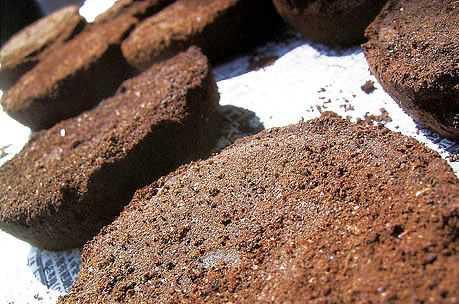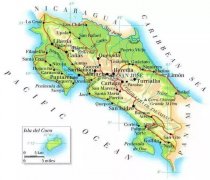Consume 2 billion cups of coffee a day and use the rest of the coffee residue for these purposes.

Professional coffee knowledge exchange more coffee bean information please follow the coffee workshop (Wechat official account cafe_style)
Recently, IEA announced the situation of photovoltaic installation in 2018, with the top 10 being: China, India, the United States, Japan, Australia, Germany, Mexico, South Korea, Turkey and New Zealand. More than 2 billion cups of coffee are consumed globally, and most of the coffee grounds are thrown away, sending 6 million tons to landfills each year. Decomposing coffee grounds releases methane into the atmosphere as a greenhouse gas, with a global warming potential 86 times higher than carbon dioxide.

According to an article published on the World Economic Forum website, coffee grounds can be used and contribute to the circular economy in the following five ways:
1. Biofuel
The natural oil in coffee grounds can be extracted and used as biofuel. Oil from waste coffee grounds is extracted and mixed with alcohol for a chemical reaction called transesterification, which produces biodiesel of about 80% coffee and 20% alcohol, plus glycerol as a by-product. Biodiesel is cleaned and refined to form a final product, which can be used as a standard biofuel for power generation. In a recent experiment, Dunkin'Donuts, an American chain, developed a house powered entirely by biofuels derived from coffee, which was rented out by Airbnb.
two。 Coffee wood
Biological beans, a British company, collects coffee grounds from businesses, universities and train stations across the country and processes thousands of tons of coffee waste into coffee wood at a coffee recycling plant in Cambridgeshire. Coffee wood burns 20% more than kiln-dried wood, and emissions from burning coffee wood are 80% less than sending coffee grounds to landfills.
3. Capture greenhouse gases
Scientists have found a way to store carbon dioxide and methane in waste coffee grounds, which are heated with potassium hydroxide to produce a substance that can store methane. The material, produced from treated coffee grounds, can store up to 7% of its weight in methane and is stable at room temperature. It can also be used to store carbon dioxide, and this method is relatively fast and cheap compared with other carbon capture and storage methods currently available.
4. Fertilizer
Perhaps the easiest way to recycle coffee grounds is to use them as fertilizer. Many cafes and coffee chains provide free venues for their customers to take away and use in the garden. But one thing to note: studies have shown that coffee grounds must be composted for at least 98 days before being put into plants. Because coffee contains high concentrations of * *, chlorogenic acid and tannins that are toxic to plants. After composting coffee grounds, these toxins subside, and plants can benefit from the potassium and nitrogen contained in baked beans.
5. Shampoo hair
In addition to being rich in natural oils, potassium and nitrogen, coffee grounds also have abrasive properties, making them a renewable substitute for a variety of household cleaning products. They can even be used to clean hair. For people who use styling products, applying coffee grounds to their hair in the shower can help loosen up and remove the residue left behind by these products.
The article is from: China Energy Network
Important Notice :
前街咖啡 FrontStreet Coffee has moved to new addredd:
FrontStreet Coffee Address: 315,Donghua East Road,GuangZhou
Tel:020 38364473
- Prev

[Qianjie Baker's Note] the "explosion" time and different flavor performance of Costa Rican black soul
Today, the editor wants to talk about the timing of baking. What is it? Explosion: coffee beans go through the dehydration period, water and other substances produce carbon dioxide due to heat, so the coffee beans continue to expand, the cell wall is broken, making a loud explosion sound. The editor uses Costa Rican Black Soul to compare Finca Las Lajas Alma Negra today.
- Next

How to grade the coffee beans?
Coffee taste grade Coffee taste mainly has four grades: 1. Gan: sweet taste is when roasting coffee beans with sugar, caramel ingredients make the brewed coffee have licorice flavor. two。 Acid: acid is a compound in beans that is commonly mistakenly called coffee tannic acid. Some beans will taste less sour after aging and eventually disappear completely. 3. Bitterness: bitterness is broken down when baking beans
Related
- Beginners will see the "Coffee pull flower" guide!
- What is the difference between ice blog purified milk and ordinary milk coffee?
- Why is the Philippines the largest producer of crops in Liberia?
- For coffee extraction, should the fine powder be retained?
- How does extracted espresso fill pressed powder? How much strength does it take to press the powder?
- How to make jasmine cold extract coffee? Is the jasmine + latte good?
- Will this little toy really make the coffee taste better? How does Lily Drip affect coffee extraction?
- Will the action of slapping the filter cup also affect coffee extraction?
- What's the difference between powder-to-water ratio and powder-to-liquid ratio?
- What is the Ethiopian local species? What does it have to do with Heirloom native species?

